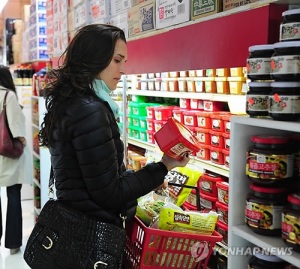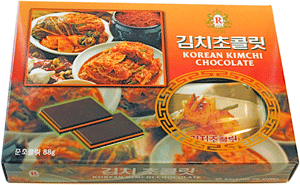One of Korea’s most imminent problems is its rapidly aging society, which means that over 7% of its population is over the age of 65. It is estimated that by the year 2050, 65.7% of Korea’s population will be over 65 years old. However, the elderly population is not in good shape. Korea now ranks number one in terms of elderly poverty among 34 OECD member countries. 49.6% of the Korean elderly population lives under the poverty line which is 4 times more than the OECD average rate.[1] Korea is also the number one country for elderly suicide rates.[2] With Korea’s low birth rate and increasing elderly population, these problems are expected to increase over the course of time. Thus, immediate action attempting to alleviate the symptoms of elderly poverty. The following essay will now proceed to elaborate the causes that contributed to the making of this current situation, and conclude with possible solutions to exacerbate the issue.
Improvements in science and medical technology have immensely lengthened the span of human life. That combined with Korea’s drastically low birth rate of 1.17 infants per person has led to the increase of the elderly within Korea. [3] Now, approximately 5.2millon people, 13% of Korea’s entire population, are over 65 years old. [4] Yet, nearly half of this percentage has to endure a low standard of life to the point where a majority of them resort to committing suicide. What has pushed the elderly to live through such financially challenged lives? One major reason is due to the lack of proper elderly welfare. Korea’s welfare system in its current form is close to ineffective. HelpAge International, an international NGO dedicated to promoting elderly rights and welfare ranked Korea 60th place out of 96 countries in terms of its standards for elderly welfare. The year before that, Korea ranked 50th place.[5] It shows that Korea is receding in terms of its welfare. Recently, the government has announced its plans to raise the state pension age from 65 to 70. By doing so, elderly citizens from the age of 65 to 68 years old will not be able to benefit from all current elderly welfare policies including state pension. As the average mandatory retirement age in Korea is 53 years old, this now means that people must have enough money to support themselves for at least 17 years at the time of retirement. As an reaction to Korea’s aging society, the government has decided to reduce the scope defining the term “elderly” rather than focusing on increasing benefits and improving existing policies.
Things were already bleak even before this new proposal by the government. Already the quality and quantity of Korea’s elderly welfare is insufficient compared to many countries.
“… transfer payments, such as social retirement benefits and public pension payments, only make up about 28.8 percent of the average income of the Korean elderly, while they account for almost 70 percent of the average income of senior citizens in many European countries, such as Denmark and the U.K.” (Lee.C, 2015) [6]
On top of that, the state pension given to the elderly is about 200,000 won which is an extremely meager amount of money to depend on for a living. In cases where the overall income of an immediate family member of an elderly citizen exceeds government standards, that citizen is not eligible to receive full state pension even if s/he has not received any financial support from that family member.[7] Consequently, a majority of the elderly population are left in a situation where they are financially independent on a government with major holes in its welfare system.
So, what can be done to alleviate this seemingly devastating situation? It goes without saying that the government must prioritize spending more time and money on improving the current welfare system more than anything else. Ironically, quite a lot of money is spent on programs that focus on the reemployment of the elderly. Last year, the Ministry of Health and Welfare spent 350 billion won (300 million USD) on elderly reemployment programs which is 4 times more what the Ministry spent on youth employment programs. [8] There is enough money to provide the elderly with the needs they have, but it is clear that the current budget is not being used effectively. What is most needed right now is providing more pension and mitigating the criteria for receiving pension so the elderly can receive enough money to make means without being restricted by technicalities. However, this does not mean that elderly reemployment programs should be neglected. Korea’s elderly reemployment rate is indeed one of the highest among OECD countries (63.1%) but only 10% involve cases where the elderly got reemployed in the field of expertise they used to work for. [9] The majority of cases involve the elderly working as guards or janitors for buildings. Effective reemployment programs that help retired citizens who seek work keep carrying on in their field of expertise should be implemented instead of its current incompetent one.
It is estimated that by the year 2050, 65.7% of Korea’s population will be over 65 years old making it a super-aged society.[10]This means there is a great possibility that elderly poverty could grow into a bigger problem than it is right now. The fact that the leading cause contributing to elderly poverty is due to the lack of adequate elderly welfare can be viewed as a double edged sword. It can be alleviated with governmental care and competent programs and policies, but if the government chooses not to take active action it cannot be overcome through individual effort. Currently, there are seemingly little visible consequences caused from elderly poverty which is also part of the reason why the government is not paying as much attention to the issue as needed. However, as time passes and more and more elderly suffering from poverty increase, our society will slowly collapse. A typical aged society itself is problematic as it creates a situation where the outnumbered youths have to be financially responsible for both themselves and the elderly. An aged society suffering from chronic extreme poverty will be very hard to maintain a certain level of quality of life let alone expect economic growth. Thus, it is absolutely necessary that the government spends copious time and resources on enhancing elderly welfare and viciously tackle the issue of elderly poverty.
Bibliography
Choi.C(2015). Our aging society must be overcome through the coexistence of young and old Retrieved from http://www.nocutnews.co.kr/news/4510683 .
Cho.E (2014). Elderly citizens suffering from extreme poverty are now being denied from receiving state pension. Retrieved from http://www.nocutnews.co.kr/news/4037004 .
Hong.S(2015). Why financial preparation for life after retirement should start now. Retrieved from http://kor.theasian.asia/archives/148583
Jeon.K (2014). Korea ranks bottom in birth rates, pressure of child care being the underlying cause. Retrieved from http://www.ajunews.com/view/20140616083301146 .
Kim.S (2015). The neglected elderly within our society. Retrieved from http://the300.mt.co.kr/newsView.html?no=2015112512077614338
Kim.Y. (2015). Korea’s elderly poverty rate tops OECD. Retrieved from http://www.koreaherald.com/view.php?ud=20150522000739 .
Lee.C(2015).Debate brews over talk of new retirement age in Korea. Retrieved from http://www.koreaherald.com/view.php?ud=20151021001146
N.A (2015). Korea ranked 60th out of 96 countries in older people’s welfare. Retrieved from http://english.hankyung.com/news/apps/news.view?c1=01&nkey=201510121610151 .
N.A(2015).Korea’s elderly welfare ranks last place among all OECD countries, a disgrace. Retrieved from http://www.daejonilbo.com/news/newsitem.asp?pk_no=1189338 .
Um.K. (2015).Korea’s elderly driven to the last ditch. Retrieved from http://imnews.imbc.com/replay/2015/nwdesk/article/3836196_17821.html .
Yoo.H.(2015). Korean elderly poverty, main cause is due to lack of proper pension plans. Retrieved from http://www.redian.org/archive/93173 .
[1] Kim.Y. (2015). Korea’s elderly poverty rate tops OECD. Retrieved from http://www.koreaherald.com/view.php?ud=20150522000739 .
[2] Um.K. (2015).Korea’s elderly driven to the last ditch. Retrieved from http://imnews.imbc.com/replay/2015/nwdesk/article/3836196_17821.html .
[3] Jeon.K (2014). Korea ranks bottom in birth rates, pressure of child care being the underlying cause. Retrieved from http://www.ajunews.com/view/20140616083301146 .
[4] Choi.C(2015). Our aging society must be overcome through the coexistence of young and old Retrieved from http://www.nocutnews.co.kr/news/4510683 .
[5] N.A (2015). Korea ranked 60th out of 96 countries in older people’s welfare. Retrieved from http://english.hankyung.com/news/apps/news.view?c1=01&nkey=201510121610151 .
[6] Lee.C(2015).Debate brews over talk of new retirement age in Korea. Retrieved from http://www.koreaherald.com/view.php?ud=20151021001146
[7] Cho.E (2014). Elderly citizens suffering from extreme poverty are now being denied from receiving state pension. Retrieved from http://www.nocutnews.co.kr/news/4037004 .
[8] Kim.S (2015). The neglected elderly within our society. Retrieved from http://the300.mt.co.kr/newsView.html?no=2015112512077614338
[9] Kim.S (2015). The neglected elderly within our society. Retrieved from http://the300.mt.co.kr/newsView.html?no=2015112512077614338
[10] Hong.S(2015). Why financial preparation for life after retirement should start now. Retrieved from http://kor.theasian.asia/archives/148583


